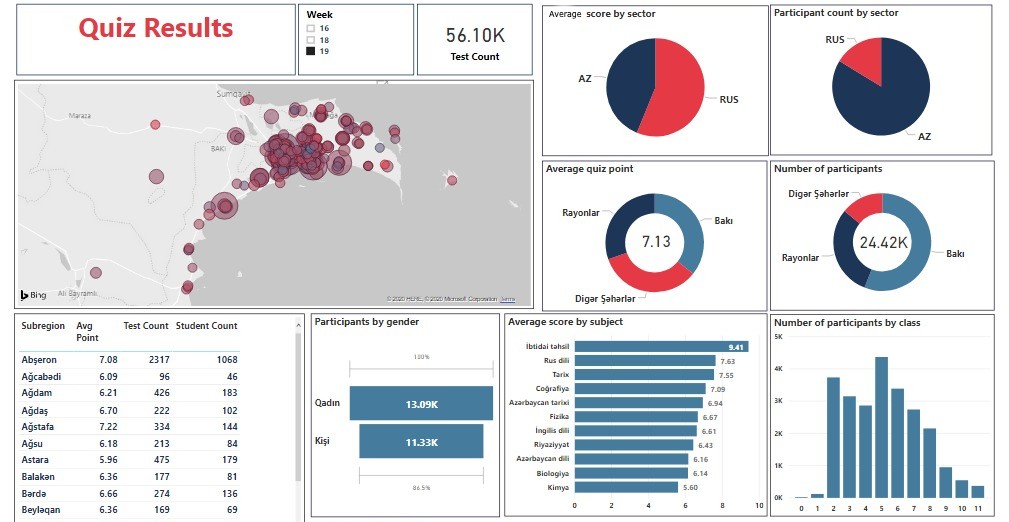-
The Ministry of Education of the Republic of Azerbaijan serves more than 1.6 million students and 140,000 teachers in its 4000 primary and secondary schools spread throughout the country in rural and urban areas. Prior to the COVID-19 pandemic of 2020, the education system did not make widespread use of digital technologies. Thus, when schools closed in Azerbaijan, due to the pandemic, the Ministry of Education had to plan quickly to ensure that all students could continue their education during the lockdown.
A vision for personalized learning
Whatever we do affects millions of people—not only those that are in school now, but parents and future generations. When we take any action, we have to understand that there is a great responsibility for tomorrow. Education is a system where you see changes very slowly, but when you plant a seed, it’s very difficult to roll it back. Before making any action, it’s important to understand what values you follow and why you do it.
Vüsal Khanlarov
Head of Bureau on ICT for Education, Ministry of Education of the Republic of Azerbaijan
While the Ministry of Education had an urgent need to provide remote learning for all of its students, they did not want only to provide this infrastructure and these tools for a short period of time. Their overarching vision for education transformation also included the desire to open up their education system, providing more transparency and more sharing of practice, in the hopes that this would also create more opportunities for innovation. They wanted to help all Azerbaijani students receive equal, personalized, and industry-relevant education opportunities, using digital tools to prepare learners for future careers and changing teachers’ mindsets as to how they teach.
Developing the Virtual School
With support from Microsoft, Azerbaijan launched their Virtual School initiative, using Microsoft Teams to provide a personalized online learning approach. In a short period of time, teachers and students across the nation were online, forming a network that grew to become Azerbaijan’s largest online community, with 1.4 million active users on Teams on a regular basis.
The Ministry of Education quickly realised the data opportunities that this Virtual School system provided them. At any moment on a school day, they were provided with live, real-time data that enabled teachers, principals, Ministry officials or parents to monitor an individual student’s actions and performance in his or her daily classes. It provided a similar window into how teachers were teaching. Only a year prior, the school information systems in Azerbaijan were only able to provide statistics: how many teachers are there, what are their background. Now they had an immensely rich dataset that included live data, which enabled them to analyse the quality of the teaching and learning experience and make data-driven decisions.

Using Open Education Analytics (OEA) and PowerBI, the government has a unique window into the data of every teacher and learner in Azerbaijani schools. They are able to monitor how multiple teacher-related variables (training, age, background, teaching practices), student-related variables (attendance, gender) and school-related variables (region, infrastructure) relate to students’ learning outcomes. Having access to this kind of rich data enables them to understand in which areas of the country and the education system they need to provide support.
Open Education Analytics
Like all education systems in the Open Education Analytics Community, the Ministry of Education of Azerbaijan is using advanced technologies and learning analytics to make education-related decisions. Even if education systems are going about this endeavour differently, they are able to learn from one another. In Azerbaijan, the Ministry has appreciated learning from other OEA Community members in Finland and the United States who are using various sources of student data and AI to make predictive decisions. They believe these kinds of analyses could be beneficial to their objectives in Azerbaijan in the future.
What’s next?
Like many education systems, the Ministry of Education is committed to raising the quality of teaching. They intend to use the data from their Virtual School period to understand how they can provide more of a personalised learning experience for their students. They also hope to use learning analytics and AI to optimise their overall school system. For example, there are remote areas of the country in which there are not enough teachers. They are looking to learning analytics to help them identify the gaps and understand how a system like the Virtual School might help.
